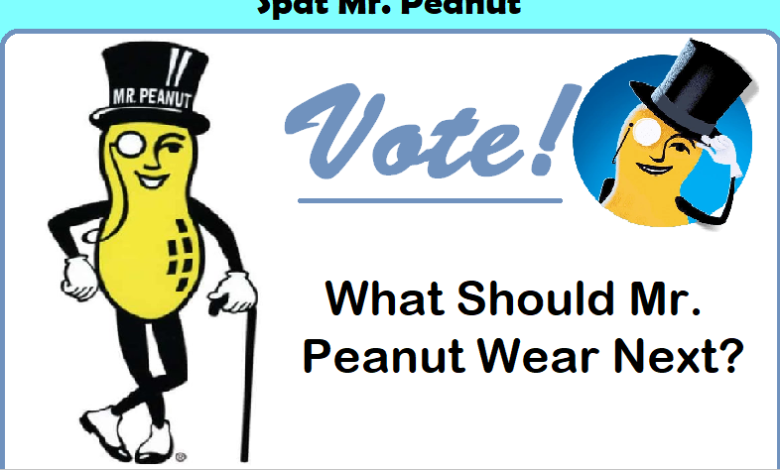
Greeting! When you think of iconic brand mascots, Mr. Peanut certainly comes to mind. Dapper and sophisticated, this monocled legume has been the face of Planters for over a century. But did you know that the term “Spat Mr. Peanut” is not a special flavor? Rather, it refers to the early days of Mr. Peanut’s logo design, characterized by his stylish spats. The story of Mr. Peanut is fascinating, starting with his creation by a young boy and evolving through decades of advertising innovation. Let’s dive into the intriguing history behind Planters’ beloved mascot and uncover how a simple drawing by a young boy became an enduring symbol in the snack industry. From his humble beginnings in a contest entry to his digital age resurgence, Mr. Peanut’s journey is a testament to the power of creative branding and the timeless appeal of a well-crafted character.
The Birth of Mr. Peanut: A Contest and a Creative Teen
A Young Visionary’s Creation
In 1916, the Planters Chocolate and Nut Company held a contest to find a new mascot. It was an era before slick marketing firms and big-budget ad campaigns. The company sought creativity from the public, offering a modest prize to the winner. Enter Antonio Gentile, a 14-year-old from Suffolk, Virginia, whose artistic flair would soon change the face of the brand.
Antonio’s winning entry featured a charming peanut character named “Mr. P. Nut.” The sketch showed a peanut with a top hat, cane, and spats, exuding an air of elegance and charm. The judges were impressed, and Antonio walked away with a $5 prize—a significant amount for a teenager in those days. But little did anyone know, this simple sketch would become an iconic image recognized worldwide.
From Sketch to Icon
Once Planters had their winning design, they handed it over to a graphic designer to refine the sketch. The designer added a monocle and further enhanced Mr. Peanut’s sophisticated look. With his new accessories, Mr. Peanut embodied a persona of class and distinction that resonated with consumers.
The choice to dress Mr. Peanut in spats, a monocle, and a top hat was a stroke of genius. These accessories not only set him apart from other mascots but also gave him a timeless quality. Today, Mr. Peanut’s appearance is just as recognizable as it was over a century ago, proving the staying power of Antonio’s original vision.
Mr. Peanut’s Evolution: From Print to Digital
Early Advertising Campaigns
In the early 20th century, Mr. Peanut quickly became the face of Planters’ advertising campaigns. Print ads featured the dapper legume promoting Planters products with catchy slogans and clever imagery. His presence helped establish Planters as a household name and a trusted brand in the snack industry.
Mr. Peanut’s image was used in various forms of media, including newspaper ads, posters, and even packaging. His sophisticated yet approachable persona made him a favorite among consumers of all ages. The character’s ability to adapt to different marketing strategies was key to maintaining his relevance over the decades.
Entering the Digital Age
As technology advanced, so did Mr. Peanut’s role in advertising. The digital age brought new opportunities for the iconic mascot to engage with audiences. Social media platforms like Facebook, Twitter, and Instagram became new arenas for Mr. Peanut to showcase his charm and wit.
In recent years, Mr. Peanut has been featured in a variety of digital campaigns, including interactive ads and viral social media posts. His presence on these platforms has allowed Planters to reach a new generation of consumers, proving that this century-old mascot can still connect with modern audiences.
The Death and Rebirth of Mr. Peanut
A Bold Marketing Move
On January 22, 2020, Planters shocked the world with a morbid but clever marketing stunt: they announced the “death” of Mr. Peanut. The announcement came just before the Super Bowl, one of the biggest advertising events of the year. The campaign featured a dramatic video of Mr. Peanut sacrificing himself to save his friends, leading to an outpouring of reactions from fans and media alike.
This bold move generated significant buzz and conversation, demonstrating the power of creative marketing. The death of Mr. Peanut was a calculated risk that paid off, capturing the public’s attention and making headlines across the globe.
The Baby Nut Phenomenon
But the story didn’t end there. During the Super Bowl, Planters revealed the rebirth of Mr. Peanut as “Baby Nut.” This adorable new version of the mascot quickly became a sensation, capturing hearts with his cute and playful demeanor. The transition from Mr. Peanut to Baby Nut was seamless, and fans embraced the new character with enthusiasm.
The Baby Nut campaign showcased Planters’ ability to innovate while staying true to their brand’s heritage. By blending nostalgia with modern trends, they successfully reintroduced Mr. Peanut to a new generation while keeping long-time fans engaged.
Fun Facts and Trivia About Mr. Peanut
- The Man Behind the Monocle: Did you know that Mr. Peanut’s full name is Bartholomew Richard Fitzgerald-Smythe? This rather grandiose name was given to him by his creator, Antonio Gentile. The name adds an extra layer of sophistication to the character, fitting perfectly with his debonair appearance.
- Mr. Peanut’s Cameos: Over the years, Mr. Peanut has made several appearances in pop culture. From TV shows and movies to comic strips and even parades, his presence has extended far beyond the realm of advertising. These cameos have helped solidify Mr. Peanut’s status as a cultural icon.
- A Mascot with a Heart: Despite his fancy attire, Mr. Peanut has always been portrayed as a kind and generous character. He’s often seen helping others and promoting the values of sharing and community. This positive image has contributed to his enduring popularity and likability.
- The Voice of Mr. Peanut: In recent years, Mr. Peanut has been given a voice in various commercials. Celebrities such as Robert Downey Jr. and Bill Hader have lent their voices to the character, adding a new dimension to his personality. These voiceovers have helped bring Mr. Peanut to life in new and engaging ways.
The Legacy of Mr. Peanut
A Century of Branding Excellence
Mr. Peanut’s longevity is a testament to the power of effective branding. For over 100 years, he has remained a consistent and beloved figure in the advertising world. His ability to evolve with the times while retaining his core identity is a key reason for his success.
Planters’ commitment to maintaining Mr. Peanut’s image and personality has been crucial. By keeping the character fresh and relevant, they have ensured that Mr. Peanut remains a central part of their brand identity.
Impact on the Snack Industry
Mr. Peanut’s influence extends beyond just being a mascot. He has helped shape the identity of the entire snack industry. His presence has set a high standard for mascot-driven branding, inspiring other companies to create their own iconic characters.
The success of Mr. Peanut has shown that a well-crafted mascot can become more than just a marketing tool. It can become a beloved figure that resonates with consumers on a personal level, creating a lasting bond between the brand and its audience.
Conclusion
The story of Spat Mr. Peanut is a fascinating journey from a simple sketch by a young boy to an enduring cultural icon. Antonio Gentile’s creation has stood the test of time, evolving with each generation while remaining true to its original charm. Through clever marketing, engaging storytelling, and a touch of humor, Mr. Peanut has become more than just a mascot; he is a symbol of the Planters brand’s legacy and innovation.
As we look to the future, Mr. Peanut’s legacy will undoubtedly continue to grow. Whether in his classic form or as the playful Baby Nut, this dapper legume will keep captivating hearts and minds for years to come. So next time you enjoy a handful of Planters peanuts, take a moment to appreciate the rich history and creativity behind the iconic Spat Mr. Peanut.
Frequently Asked Questions (FAQs)
What is a Spat Mr Peanut?
“Spat Mr. Peanut” refers to an early version of the logo for Mr. Peanut, the iconic mascot of the Planters brand. The term “spat” in this context highlights the stylish spats (a type of shoe covering) that Mr. Peanut wears. These spats, along with his monocle, top hat, and cane, contribute to his sophisticated and dapper appearance.
What is a spat accessory Mr Peanut?
The “spat” accessory on Mr. Peanut refers to the stylish spats that he wears. Spats, short for spatterdashes, are a type of footwear accessory covering the instep and ankle, often fastened under the foot with a strap. They were typically worn in the late 19th and early 20th centuries as a fashionable addition to shoes, primarily by men.
How does spat relate to Mr Peanut?
The term “spat” relates to Mr. Peanut through the stylish spats he wears as part of his iconic ensemble. In the case of Mr. Peanut, the spats are a key element of his sophisticated and dapper appearance. When Mr. Peanut was first conceptualized by 14-year-old Antonio Gentile in 1916, his design featured a peanut character with a cane. A graphic designer later refined this design by adding a top hat, monocle, and distinctive spats. These additions gave Mr. Peanut a gentlemanly and elegant look, making him stand out as a unique and memorable brand mascot.
For more helpful articles on a range of topics, take a moment to browse through this website!





